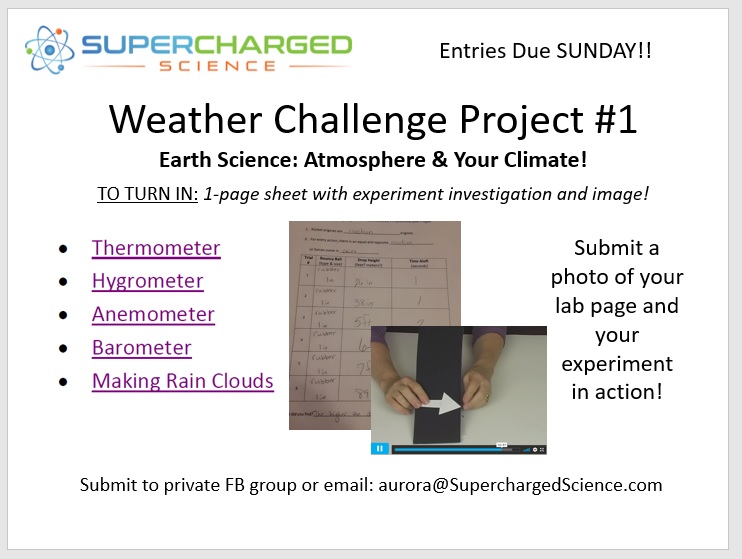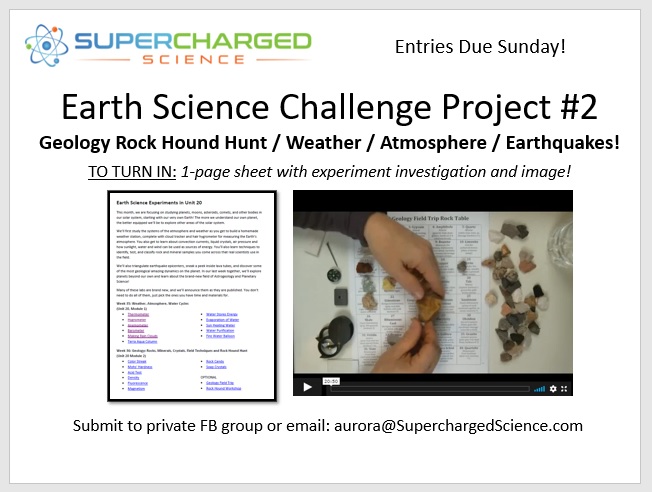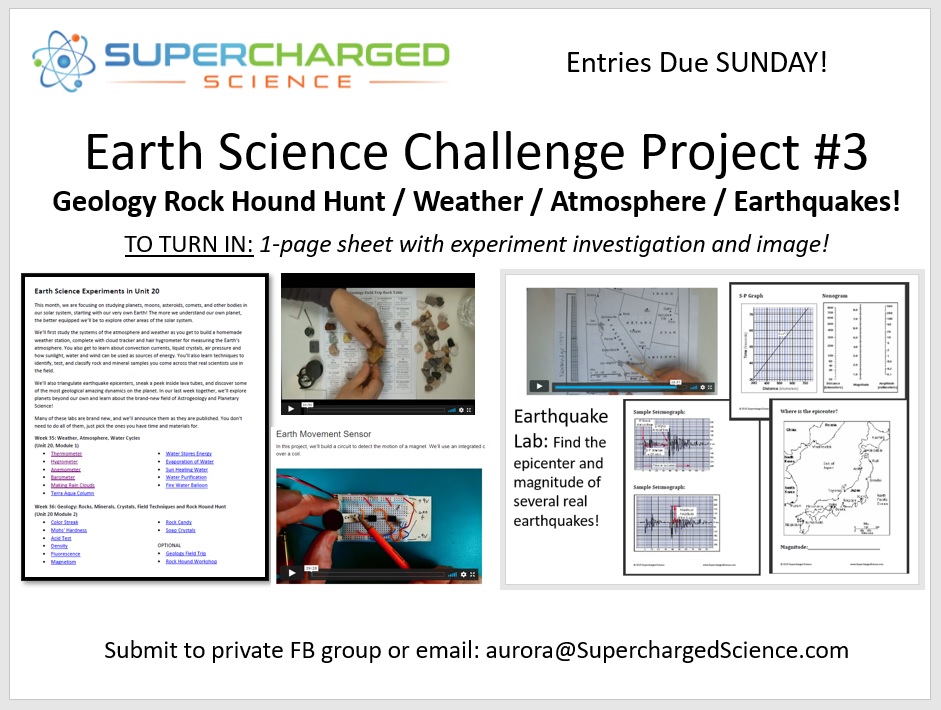Week 36: Weather, Atmospheres & Water Cycles
Weather changes so quickly around our planet that pilots can even get a minute-by-minute weather update! We're going to discover how temperature, pressure, humidity, and wind strength all contribute to the weather we experience. Weather is how the Earth moves energy around our planet, and by studying storms, hurricanes, tornadoes and extreme heat conditions can help us better understand changing climate conditions, solar winds and ozone levels.

Week 37: Geology of Rocks, Minerals and Crystals
We’re about to dive into the big ideas behind rocks, minerals, and the science of geology. Soon you’ll learn how to burn coal, fluoresce minerals, chemically react rocks, streak powders, scratch glass, and play with atomic bonds as they learn how to be a real field geologist. Throughout this week, we’re going to be talking about the chemical composition (what elements rocks are made of), so you’ll really understand chemistry and geology both!

Week 38: Volcanoes, Earthquakes and Tides
Discover the shifting movement of the earth as it moves energy around the interior of our planet! You'll learn how to build electronic detectors to measure temperature, shift, sunlight and more. You'll also explore volcanoes (both above and under water), discover vertical shifting in water and land tides, and learn how to triangulate the epicenter of an earthquake!

Week 39: Exogeology: A Special New Area of Science (also called "Planetary Science" or "Astrogeology"
(This is the study of geology on other planets, comets, asteroids, moons and more!)
We're going to look at the latest data and research scientists are conducting on space missions and learn about the structure and composition of planets and other bodies in the solar system, like comets, asteroids, meteorites, and more! It's such a new area of science that currently has several different names that all mean the same thing: Planetary Geology, Astrogeology and Exogeology.
BONUS: Earth Science Electronic Detectors
Here are Brian's videos showing how to build the Earth Science Electronic Detectors for May.
Click here to download the schematics for these projects.
You will need specific electronic parts, plus some additional tools and supplies. Page two of the May shopping list provides a list of what you will need.
Click here to download the shopping list for May: Earth Science.
FutureVision Research's Earth Science Electronics Kit, provides all the electronic parts needed for these projects. (except the multimeter) The electronic detectors below are for upper level students. If you haven't yet completed the first section of Unit 14, I recommend working on those first before doing the projects below. We covered electronics back a couple of months ago in Mechanical Engineering (January content), so please review the content as needed before moving into the projects below.
STUDENTS: You will need to start with the basic Breadboard Circuits here before doing the Earth Science Detectors videos below.
Light Listener
In this project, we’ll build a project to listen to pulses of light that come from fluorescent bulbs and other sources. We’ll use two integrated circuits (IC) called operational amplifiers to increase the signal from a phototransistor. We can then listen to that signal by using a speaker. Download schematic here.
Monitor Sunlight
In this project, we’ll build a circuit to measure light from the sun and other sources. We’ll use an integrated circuit (IC) called an operational amplifier to increase the voltage from a solar cell and measure the output using a multimeter. Download schematic here.
Earth Movement Sensor
In this project, we’ll build a circuit to detect the motion of a magnet. We’ll use an integrated circuit (IC) called an operational amplifier to light up an LED when a magnet moves over a coil. Download schematic here.
Sun Photometer
In this project, we’ll build a circuit to measure light using a LED. We’ll use an integrated circuit (IC) called an operational amplifier to increase the tiny voltage caused when light hits an LED. Download schematic here.
LED Telemetry Transmitter
In this project, we’ll build a circuit to measure temperature using a special kind of resistor called a thermistor. We’ll use a special integrated circuit (IC) called the 555 timer to change the blink rate of an LED based on temperature. Download schematic here.
Electronic Cricket
In this project, we’ll build a circuit to measure temperature using a special kind of resistor called a thermistor. We’ll use an integrated circuit (IC) called the 555 timer to change the rate of “chirps” based on temperature. Download schematic here.
[/am4show]
